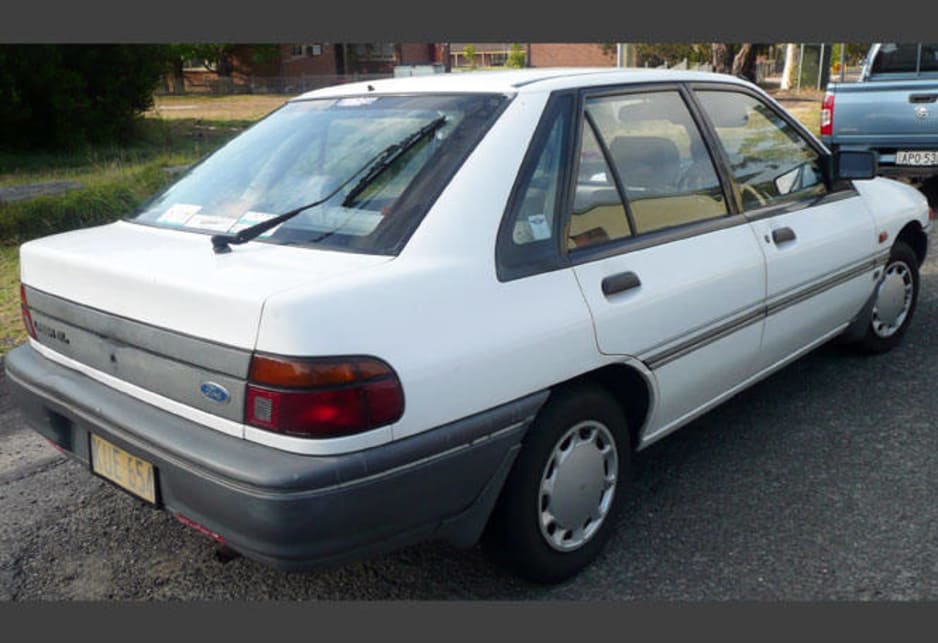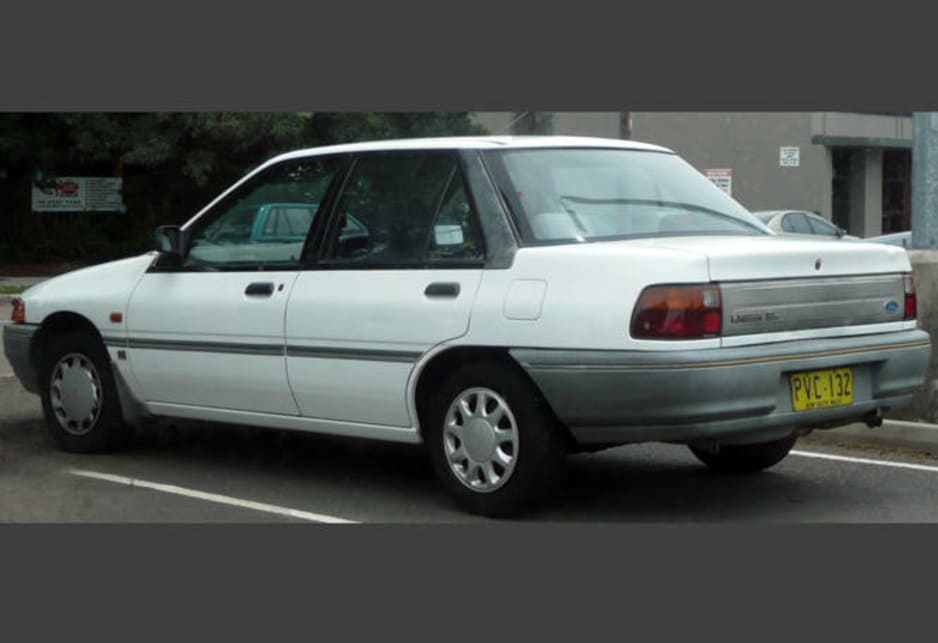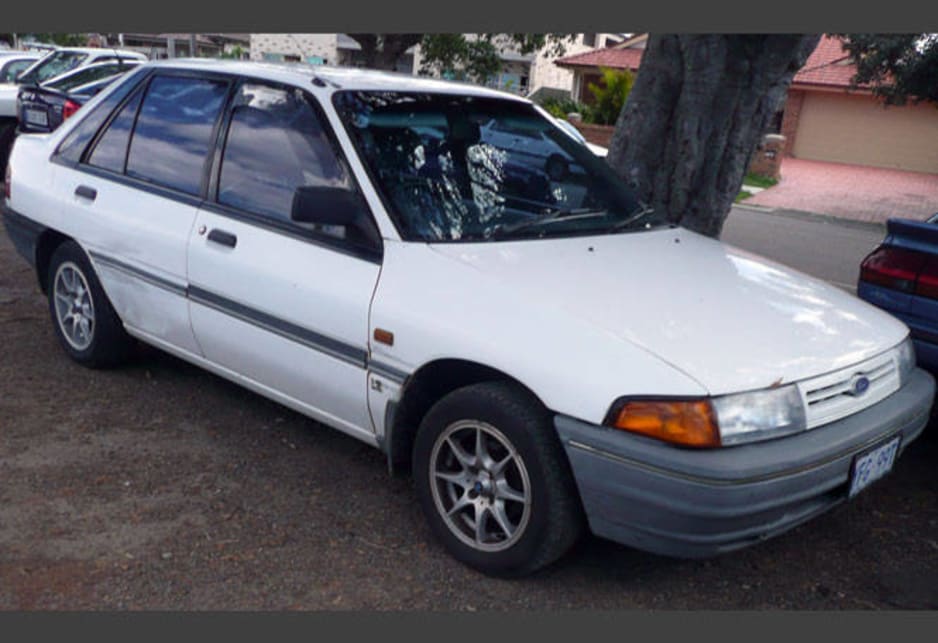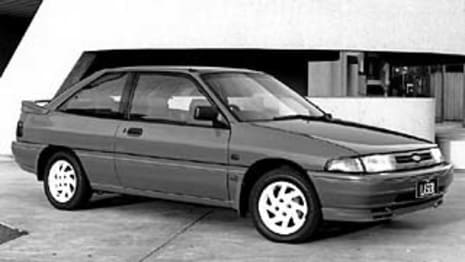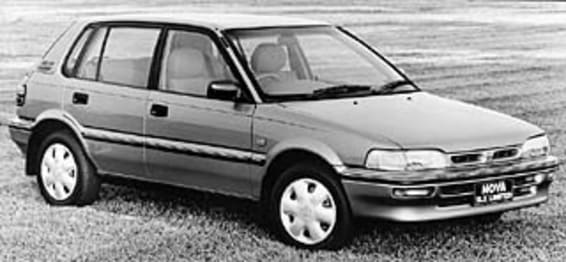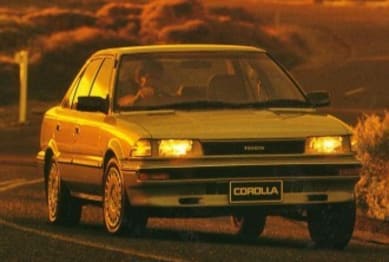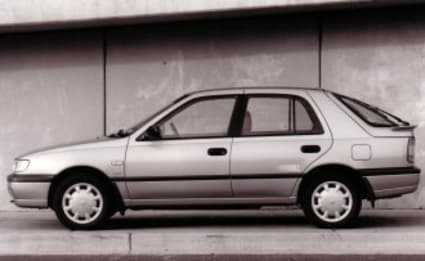
Used Ford Laser review: 1990-1994
- Ford Laser
- Ford Laser 1990
- Ford Laser 1991
- Ford Laser 1992
- Ford Laser 1993
- Ford Laser 1994
- Ford Laser Reviews
- Ford Reviews
- Ford Sedan Range
- Ford Hatchback Range
- Sedan
- Hatchback
- Ford
- Used Car Reviews
- Buying tips
It’s hard to imagine looking at today’s sales figures, but there was a time when Ford had the top selling small car in the land. It was only a decade or so ago that the Laser was Australia’s most popular small car.
The Laser was based on the Mazda 323, but Ford’s designers gave it a cosmetic makeover and the company’s marketing people came up with a slightly different model line-up to differentiate it from its Hiroshima cousin.
MODEL WATCH
The KF kicked off the third generation of the Laser. It was roomier inside thanks to an extended wheelbase, which resulted in more legroom, and was wider, which gave it more elbowroom.
Two main body styles were offered by Ford – a five-door hatch, a four-door sedan – and there were four levels of specification – L, GL, S and Ghia. There was also a three-door TX3 sporty hatch, but we’ll focus on the mainstream models here.
Ford stylists based in Japan did the cosmetic rework to provide some differentiation from the Mazda 323. Their work resulted in a mildly revamped nose with a different grille and bumper, rear lights and wheel trims. Inside, the little Ford had different a steering wheel, dash and instruments, and trim.
The body was stiffened in an attempt to reduce the noise, vibration and harshness complained of in earlier Lasers, but it still came in for some criticism. The hatch was rated a little noisier than the sedan.
Refinements to the MacPherson Strut front suspension and MacPherson Strut, twin trapezoidal link rear suspension resulted in more responsive steering and sharper handling, along with a more comfortable ride.
New speed sensitive power-assisted rack-and-pinion steering was warmly praised for its precision and tight turning circle.
All models benefited from more powerful brakes, a combination of disc front and drum rear was used on most models. But it was before the time of anti-skid electronics on small cars so drivers had to rely more on their skill to avoid collisions.
Three engines were employed in the Laser. The L and GL models had a 1.6-litre single overhead camshaft 16-valve four-cylinder engine fed by a carburettor, the S and Ghia got a fuel-injected single overhead camshaft, 16-valve 1.8-litre four-cylinder engine.
The 1.6-litre engine was more powerful than the engine in the previous model and had 64 kW at 6000 revs with 123 Nm at 3100 revs. While it wasn’t as spirited as the 1.8-litre engine it was smooth and flexible with good midrange torque.
The 1.8-litre engine delivered more spirited performance and is clearly the one to chase now. The single overhead camshaft engine gave 76 kW at 5500 revs with 150 Nm at 4000 revs.
The choices of transmission were a smooth shifting five-speed manual ’box and three-speed auto for the 1.6-litre engine, while a four-speed auto was offered on the larger engine in addition to the five-speed manual.
When you ticked the ‘L’ or ‘GL’ box on the order form you got an AM/FM radio-cassette, cloth trim and steel wheels with wheel caps, but if you stepped up to the ‘S’ you drove away with alloy wheels and power steering as well. Go all the way and tick the ‘Ghia’ box and you also got central locking and power mirrors.
The KH/KHII updates followed in 1991 and ’92 and mainly brought some minor styling changes.
IN THE SHOP
The KF Laser is getting on in years now and like all old cars should be approached with care. It’s worth having a mechanic or at least someone with mechanical knowledge give the car you choose a thorough going over before purchase.
On average the KF will have done close to 250,000 km so there’s every chance it will have a number of problems simply because of its age and the mileage done.
Start by checking the service record, older cars tend to be neglected by owners who simply ignore it or can’t afford it. Neglected cars should be avoided, they are trouble, so look for cars that have been well cared for, even if they take longer to find.
The engines are generally robust and reliable and will go for a long time if they’ve been serviced, which really only means a regular oil change. The cam timing belt needs to be changed every 100,000 km, if you don’t you face the prospect of a belt breakage, which will have you grinding to a halt on the side of the road. Internal damage is unlikely if it does break.
Go for the 1.8-litre engine, it’s the one with the best performance and the most fun to drive.
Gearboxes are generally reliable, listen intently for noises in intermediate gears, and make sure the manual engages smoothly without baulking. If it does baulk it may mean the clutch is nearing the end of the road.
The body tends to stand up well, but look for rust, particularly around the windscreen and rear window.
Inside, look for cracked dash pads, torn seats, and worn seat belts.
The good thing is that because it was such a big seller there are plenty of cars around, and plenty of spares to fix them when they break down.
IN A CRASH
No airbags or anti-skid ABS brakes here; safety is down to the body shell, seat belts and the driver’s ability.
The body shell will provide the protection needed, provided it hasn't been in a big crash or heavily rusted, the seat belts should be in good condition and not worn, and the driver needs to know how to brake without locking the brakes.
OWNERS SAY
Ted Endacott recently bought a 1991 Ghia 1.8 manual after checking through a host of Camrys, Corollas, Pulsars etc. The 1.8-litre fuel-injected SOHC motor has the extra grunt to run air-conditioning and to haul a load of passengers. He says it’s well worth chasing this motor. In manual form it sips fuel at 8.5 L/100 km in city traffic and 6.5 L/100 km on the highway. Engines sometimes die around 200,000 km, but pampered models often run past 300,00 km. These are tough and durable. The five-speed manual gearbox is fun to use. Fifth gear is tall, with revs around 2600 revs at 100 km/h. There is an irritating gap between first and second, but other ratios are close. Expect around 100,000 km between clutch replacements. The steering is precise with no torque steer and the handling is sporty. The seats are comfortable, the interior is spacious, air con/heating is good, boot space generous. It is a well-designed little car.
LOOK FOR
• record of regular servicing
• roomy interior
• good performance form 1.8-litre fuel-injected engine
• good fuel economy
• age is starting to weary them
THE BOTTOM LINE
A good one is a great little car with a good-sized interior, good performance, handling and fuel economy.
VERDICT
65/100
Pricing
| Year | Price From | Price To |
|---|---|---|
| 1994 | $1,650 | $4,070 |
| 1993 | $1,980 | $3,850 |
| 1992 | $1,380 | $4,070 |
| 1991 | $1,380 | $4,070 |
| 1990 | $1,380 | $4,070 |
Pricing guides
Range and Specs
| Vehicle | Specs | Price* | |
|---|---|---|---|
| L | 1.6L, ULP, 4 SP MAN | $1,760 – 2,750 | 1990 Ford Laser 1990 L Pricing and Specs |
| GL | 1.6L, ULP, 5 SP MAN | $2,640 – 4,070 | 1990 Ford Laser 1990 GL Pricing and Specs |
| Ghia | 1.6L, ULP, 5 SP MAN | $1,980 – 3,080 | 1990 Ford Laser 1990 Ghia Pricing and Specs |
| GL | 1.6L, ULP, 3 SP AUTO | $2,640 – 4,070 | 1990 Ford Laser 1990 GL Pricing and Specs |
Other cars to consider
$1,600
Lowest price, based on third party pricing data


